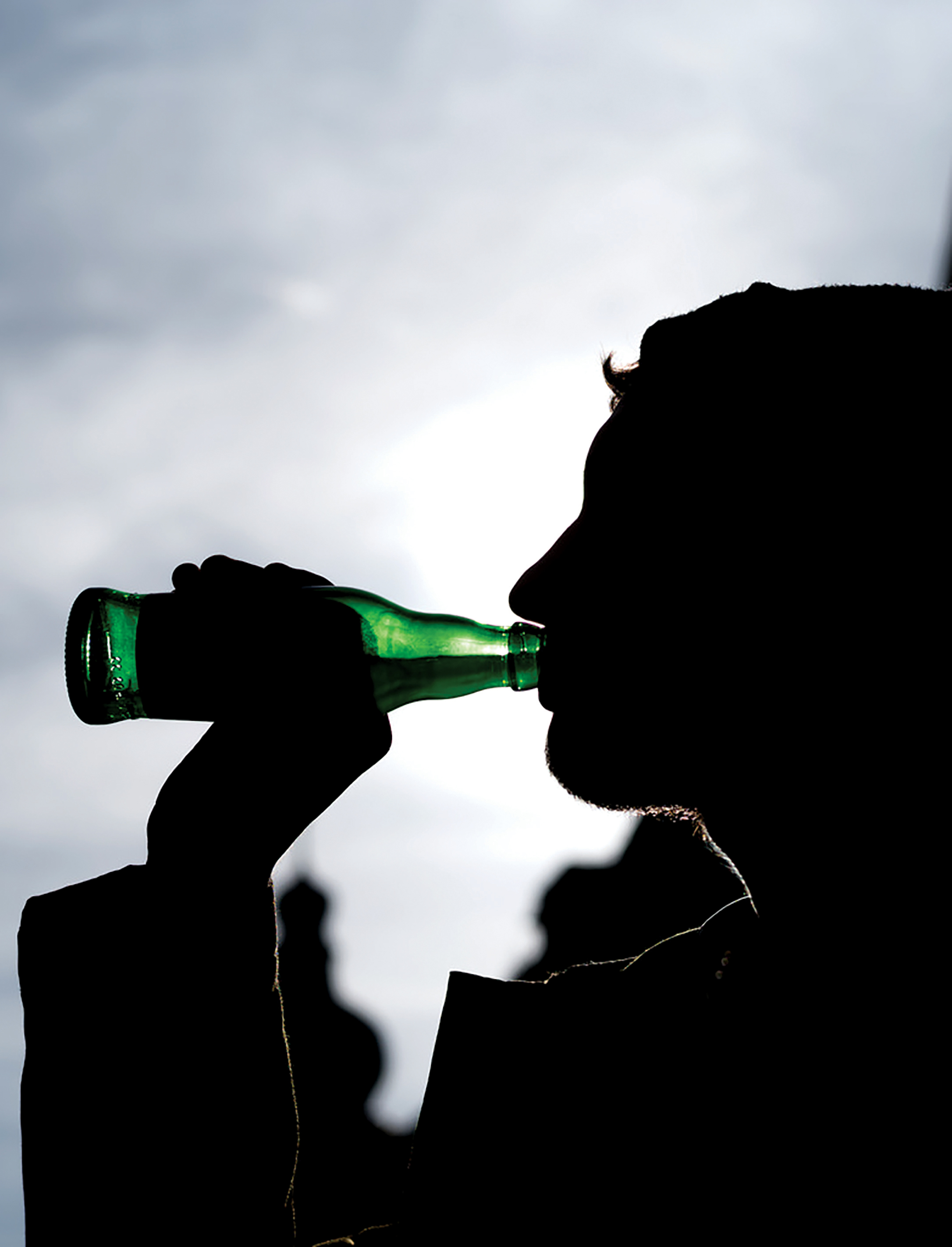
Enter a liquor store in Delhi and chances are that every single person jostling past is a man. After exiting, they often queue up at a store strategically placed near the liquor store. This is where you can get snacks to go with your drinks, mixers, cigarettes — and, of course, plastic cups.
Why would someone want to drink their whisky from a plastic cup unless they are students having a house party? Well, because they plan to drink in public spaces, mostly parking lots and inside their cars.
Survey the area outside a liquor store and if there’s any empty spot around, chances are you’ll find men drinking there. One such spot is in Delhi’s sub-city of Dwarka. When one reaches the sector 10 metro station and steps out, the massive billboards beckon you to the wine, beer and imported liquor shop. The parking lot next to metro station that leads to the liquor store by nightfall becomes a hub for men sitting beside their parked vehicles or inside, drinking or stocking up more.
It is a public nuisance, with many passing comments on passersby and making it an uncomfortable scenario when one has to take the car out from a parking spot after a late night at work.
So what are the police doing about it? Delhi Police’s annual report shows that in 2018, ‘action against liquor consumption at public places’ rose by 46.67%. In 2017, the number of people caught were 23,094 which became 33,873 the following year.
This, despite the Delhi government led by CM Arvind Kejriwal making public consumption of liquor an expensive risk if caught, with a Rs 5,000 fine (under the excise act) and re-offenders fined with Rs 10,000 it still goes on.
There’s just too many to be caught and perhaps not enough policing. Rashmi Sen (name changed) says many of her friends have been caught while drinking in public spaces. But the magic remains with the offender, “basically depends on how well you can negotiate or bribe the officer”, Sen says.
While she too took part in this activity while in college, she says it was more for “pregaming” before heading into a club. “This is because clubs are expensive and drinking in cars cheap”, Sen adds.
They would usually use the parking spots at Nehru Place and in Gurugram’s sector 29 market. Both these spots have many bars and clubs in the vicinity, making them the perfect areas.
But Sen agrees that many a time, drinking in public areas takes place “because they may not be able to drink at home”. And thus, there’s a perfect term for it — called “Car-o-bar”, an alternative to drinking at a bar with exorbitant prices or at home, where your family frowns on it.
For the younger lot who want to party on a budget, there may not be a choice. But what about the older group of men which are usually seen drinking outdoors? Well, they might also want to drink on a budget. Bars usually charge at least Rs 200 per 35 ml of a drink, unlike a full bottle (750 ml) of a regular whisky which would cost Rs 800.
Plus, this again brings up the very important topic of drinking at home: still a taboo for most families. Just like many people eat non-vegetarian food only outside their home, the drinking of alcohol too goes on outside. It is a problem of being constrained by culture and of disregard for public spaces — and, of course, law and order.
India’s drink stats
The per capita alcohol consumption in India increased two folds between 2005 and 2016, according to the Global status report on alcohol and health 2018 released by the World Health Organization (WHO) .
Indians consumed 2.4 litres of alcohol in 2005, which increased to 4.3 litres in 2010 and scaled up to 5.7 litres in 2016, the report said.
The highest increase is expected in the South-East Asia Region, with an increase of 2.2 litres alone in India which represents a large proportion of the total population in this region. Drinking in lower middle income group was highest in India.
Veer Ahlawat’s final-round 67 sealed a three-shot win at the Rs 1 crore CIDCO Open…
OnePlus has launched the 15R smartphone and Pad Go 2 tablet in India, with prices…
Nearly 2,800 Delhi vehicles denied fuel on first day of 'No PUC, No Fuel' drive…
Delhi Police arrested five men in two fake investment scams, unearthing a Rs 24 crore…
The ED seized cash, silver and gold worth over Rs 19 crore in fresh raids…
Boho Bazaar’s Christmas edition returns to Delhi on December 20–21 with 300+ brands, live music…